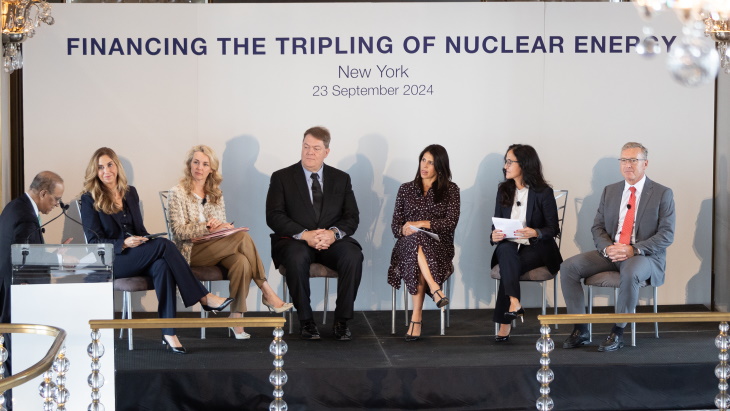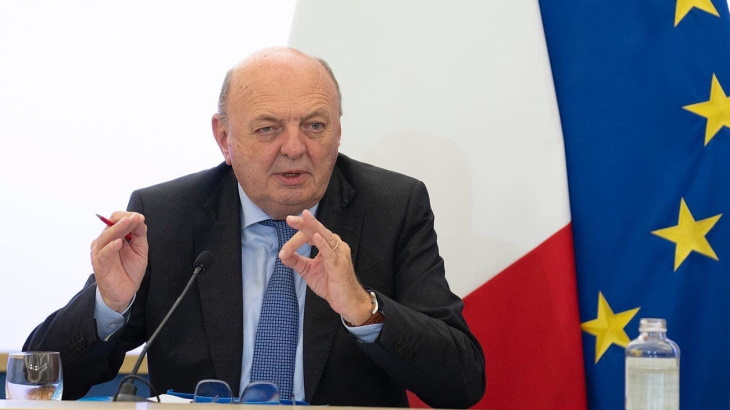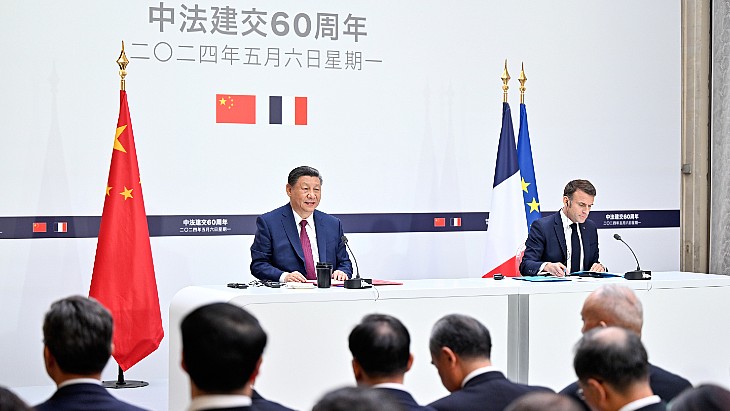Wyoming to consider microreactors as SMR plans continue
.jpg)
BWXT's project is one of two recommended by the Wyoming Energy Authority (WEA) to Governor Mark Gordon to receive nearly USD10 million each from the Energy Matching Funds (EMF) programme which was established by the state legislature in 2022 to provide matching funds for research, demonstration, pilot projects or commercial deployment projects related to Wyoming energy needs. Management of the fund is delegated by the governor to the WEA.
The other project recommended by the WEA is a carbon storage hub project led by the University of Wyoming School of Energy Resources in partnership with Frontier Carbon Solutions. It has recommended that both receive their recommended awards - USD9,999,802 for the BWXT project and USD9,135,000 for the Sweetwater Carbon Storage Hub project - in full.
WEA Executive Director Rob Creager said the Energy Matching Funds "are a prime example of how State, Federal and private sectors can work together to achieve success and move the needle forward. Projects like the Sweetwater Carbon Storage Hub and the BWXT microreactor project hold potential for our energy security and Wyoming’s economic advancement."
BWXT's two-phase project, Assessment of Microreactor Deployment, Applications and Development of Nuclear Microreactor Technologies and Knowhow in the State of Wyoming, would look into developing Wyoming’s existing supply chain to support reactor component manufacturing and assess the viability of deploying small-scale nuclear reactors in the state as a supplement to existing power generation resources to meet growing energy needs, with the overall goal to enable stakeholders to make a decision whether or not to deploy a lead microreactor unit in Wyoming. The total cost of the project is USD20.6 million.
The project aims to develop a conceptual design based on BWXT's Advanced Nuclear Reactor (BANR) that is specifically suited to the needs of Wyoming, how process heat and power from the high-temperature gas-cooled reactor can be coupled to Wyoming's industries, and especially its extractive industries. If built, a lead microreactor would serve as a demonstration plant for a potential fleet of microreactors that could be deployed across the state and region, the WEA said.
BWXT plans to collaborate with industrial partners during the project including a trona mining company, which would be a potential end-user of the lead plant. (According to the Wyoming Mining Association, the state has the world's largest deposit of trona, a sodium carbonate compound that is processed into soda ash or bicarbonate of soda, supplying about 90% of the USA's soda ash.)
"BWXT is very excited to get started on this project and work with the WEA and other Wyoming organisations who share our belief in the benefits of nuclear power," said BWXT Advanced Technologies President Joe Miller said. "At the end of this project, the potential job-creation, manufacturing and industrial opportunities for nuclear power in Wyoming will be clearer, and we will have a roadmap for deploying microreactors in Wyoming."
The proposals are open to public comment until 18 August, and final approval will rest with the governor.
Natrium application next year
Reactor developer TerraPower has told the US Nuclear Regulatory Commission (NRC) that it now anticipates submitting a Construction Permit Application (CPA) for its demonstration Natrium sodium-cooled fast reactor plant at Kemmerer in Wyoming in March 2024. The company had previously anticipated submitting the CPA this month.
"TerraPower looks forward to continuing pre-application engagements with the NRC leading up to the CPA submittal", the company said in a letter to the regulator, dated 2 August.
The company recently announced the selection of the first four companies to supply services and equipment for the project, although in December last year, it warned that a lack of sufficient commercial capacity to manufacture high-assay, low-enriched uranium fuel would lead to delays to the proposed 2028 in-service date.









_88592.jpg)
_66488.jpg)

